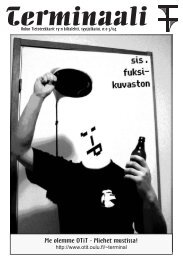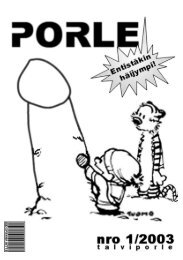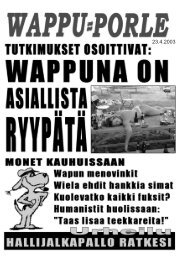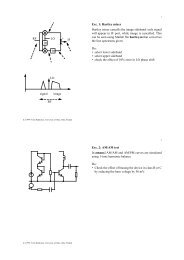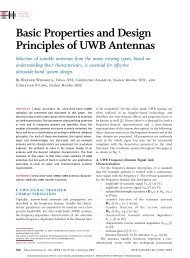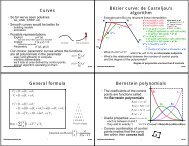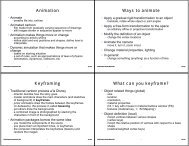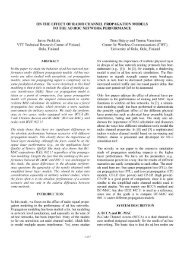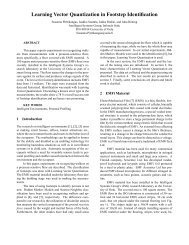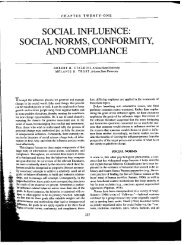Accurate, Dense, and Robust Multiview Stereopsis - Department of ...
Accurate, Dense, and Robust Multiview Stereopsis - Department of ...
Accurate, Dense, and Robust Multiview Stereopsis - Department of ...
You also want an ePaper? Increase the reach of your titles
YUMPU automatically turns print PDFs into web optimized ePapers that Google loves.
FURUKAWA AND PONCE: ACCURATE, DENSE, AND ROBUST MULTIVIEW STEREOPSIS 1369<br />
Fig. 10. Sample input images <strong>of</strong> all <strong>of</strong> the data sets used in our experiments. The top row shows the object data sets. From left to right: roman,<br />
temple, dino, skull, face-1, face-2, <strong>and</strong> body. The bottom three rows show the scenes <strong>and</strong> the crowded scenes data sets. From left to right <strong>and</strong> top to<br />
bottom: steps-1, city-hall, wall, fountain, brussels, steps-{2,3}, <strong>and</strong> castle. Multiple images are shown for brussels, steps-{2,3}, <strong>and</strong> castle.<br />
5.2 Reconstructed Patches <strong>and</strong> Mesh Models<br />
Reconstructed patches, texture-mapped using the reference<br />
image, are shown in Fig. 11. As illustrated by the figure,<br />
patches are densely covering reconstructed object <strong>and</strong> scene<br />
surfaces. city-hall is an interesting example because viewpoints<br />
change significantly across input cameras, <strong>and</strong><br />
frontal statues are visible in some images in close-ups.<br />
Reconstructed patches automatically become denser for<br />
such places because the resolution <strong>of</strong> patches is controlled<br />
by that <strong>of</strong> input images (we try to reconstruct at least one<br />
patch in every image cell). The wall data set is challenging<br />
since a large portion <strong>of</strong> several <strong>of</strong> the input pictures consists<br />
<strong>of</strong> running water. Nonetheless, we have successfully<br />
TABLE 1<br />
Characteristics <strong>of</strong> the Data Sets Used in Our Experiments<br />
detected <strong>and</strong> ignored the corresponding image regions as<br />
outliers. Obstacles such as pedestrians in brussels or<br />
cartoonish humans in steps-{2,3} do not show up in the<br />
texture mapped patches because our patch generation<br />
algorithm guarantees that they do not appear in reference<br />
images. Fig. 12 shows patches obtained from the initial<br />
feature matching step that are sparse, noisy, <strong>and</strong> erroneous.<br />
Fig. 13, in turn, shows patches that are removed in each <strong>of</strong><br />
the three filtering steps. As illustrated by the figure, our<br />
filtering procedure is aggressive <strong>and</strong> removes a lot <strong>of</strong><br />
patches possibly containing true-positives, but this is not a<br />
problem since the expansion <strong>and</strong> the filtering steps are<br />
iterated a couple <strong>of</strong> times in our algorithm. The number <strong>of</strong><br />
the reconstructed patches at each step <strong>of</strong> the algorithm is<br />
given in Fig. 14.<br />
A visual hull model is used to initialize a mesh model<br />
before the iterative snapping procedure for all object data<br />
sets except face-2 <strong>and</strong> body where viewpoints are limited <strong>and</strong><br />
PSR s<strong>of</strong>tware is used instead. The visual hull model is<br />
computed by using the EPVH s<strong>of</strong>tware by Franco <strong>and</strong> Boyer<br />
[32] except for the dino data set, where an object is not fully<br />
visible in some images <strong>and</strong> a st<strong>and</strong>ard voxel-based visual<br />
hull algorithm is used instead (see Fig. 15). Mesh models<br />
before the refinement—that is, models obtained either by the<br />
visual hull construction followed by the iterative snapping<br />
(Section 4.1.2) or PSR s<strong>of</strong>tware (Section 4.1.1) are shown for<br />
some data sets in the top row <strong>of</strong> Fig. 17.<br />
Mesh models after the refinement step are shown in<br />
Fig. 16 for all <strong>of</strong> the data sets. Our algorithm has successfully<br />
reconstructed various surface structures such as the highcurvature<br />
<strong>and</strong>/or shallow surface details <strong>of</strong> roman, the thin




